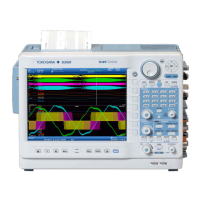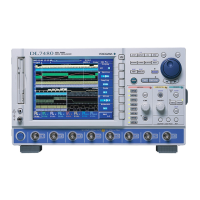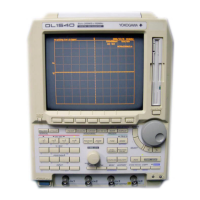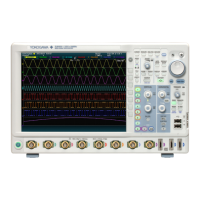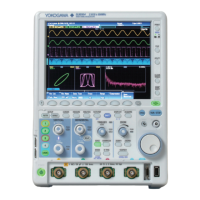Triggering
6
7
8
9
10
11
12
13
14
15
16
17
18
Index
App
6-41
IM DLM6054-01EN
Explanation
You can use this feature to trigger by treating the occurrences of the trigger conditions as events.
Event Interval (Event Cycle)
The DL6000/DLM6000 triggers when the interval between event occurrences meets the specified
time conditions.
Event
More than
t1
t2 t3
t1 < T1 t2 > T1 t3 < T1
Between
Out of Range
Trigger
Time out
Reference time: T1
Event
t1
t2 t3
t1 < T1 t2 > T1 t3 < T1
Trigger
Reference time: T1
Trigger
Event
t1
t2 t3
T1 < t1 < T2 T2 < t2 t3 < T1
Trigger
Reference times: T1 and T2
Event
t1
t2 t3
T1 < t1 < T2 T2 < t2 t3 < T1
Trigger
Reference times: T1 and T2
Trigger
Event
t1
t2 t3
Trigger
Reference time: T1
T1
t1 < T1 t2 > T1 t3 < T1
Event Delay (Event Delay)
The DL6000/DLM6000 triggers according to the relationship between two events.
The DL6000/DLM6000 will trigger when the specified relationship is established between the set
time and the time interval from the occurrence of event 1 to the first occurrence of event 2. If the
time interval from the occurrence of event 1 to the first occurrence of event 2 does not match the
specified time conditions, the DL6000/DLM6000 will search for the conditions again after event 1
occurs. The following is an example for when the time width mode is set to “More than.”
Event 1
Reference time
Trigger
Event 2
Reference time
Determination
starts here
Because event 2 occurred within the
reference time, the DL6000/DLM6000
will begin determination again starting
with the next event 1.
6.11 Triggering on Period, Delay, and Sequence Events

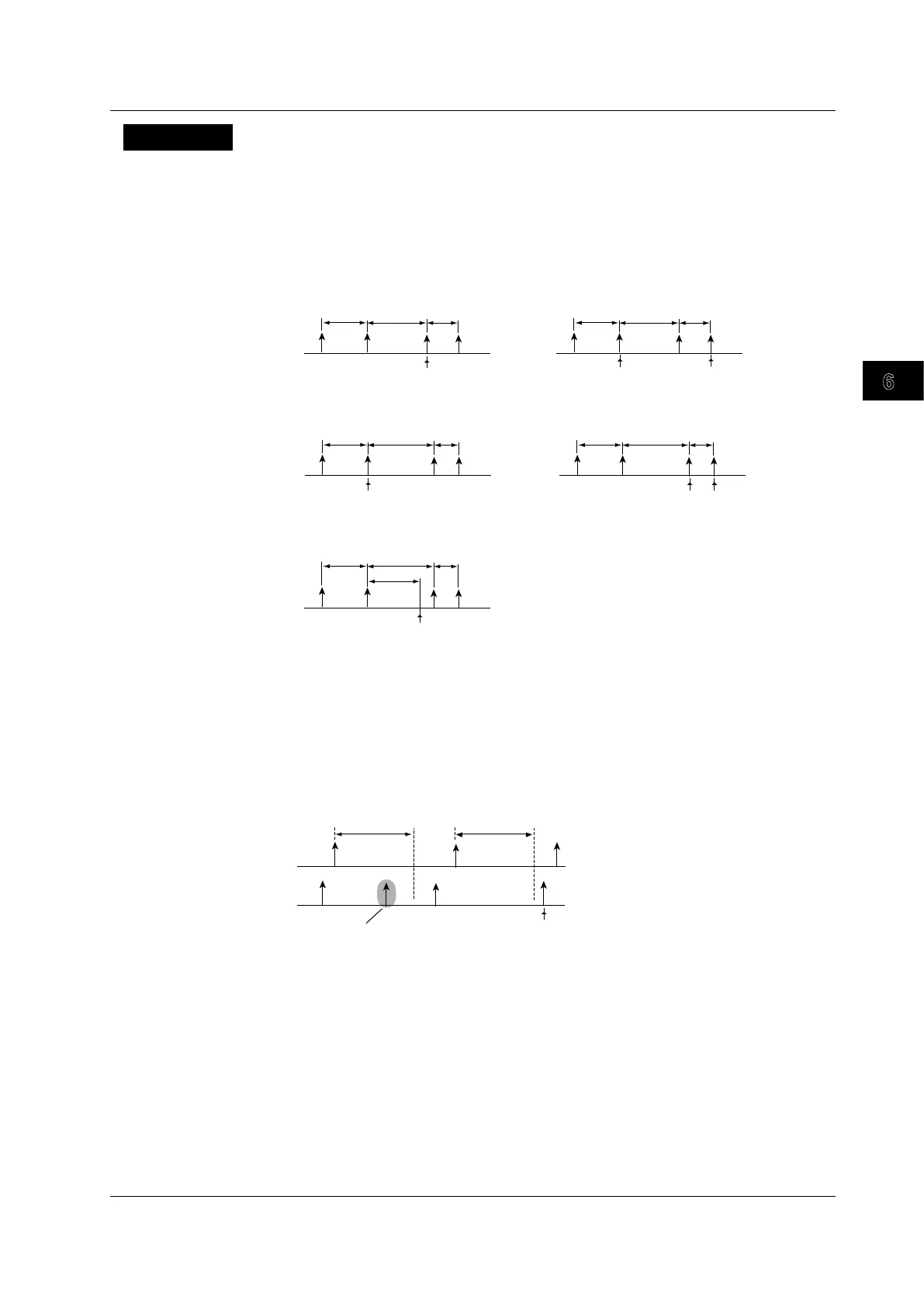